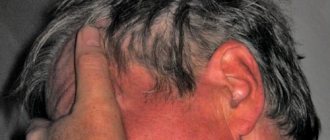Neurotic disorders occupy a leading place in the structure of mental illnesses. The prevalence of psychogenic neurotic disorders necessitates constant improvement of their diagnosis, therapy and prevention. Often, patients with neurotic disorders seek specialized help from neurologists and general practitioners.
At the Yusupov Hospital, this category of patients is treated by experienced psychotherapists who have specialized in leading European clinics and are fluent in psychotherapeutic techniques, including cognitive behavioral therapy. Medical staff treats patients' problems with respect.
ICD 10 code
Stress-related and somatoform neurotic disorders in ICD 10 are classified in categories F40-F48. Neurosis is a disease with reversible mental disorders. The disease is caused by exposure to traumatic factors. Neurotic disorder is characterized by the presence of the following symptoms:
- disturbances of well-being, somato-vegetative, emotional functions;
- mental exhaustion;
- the patient’s awareness of the fact of his illness;
- absence of disruption of the reflection of the real world.
Psychiatrists distinguish the following clinical forms of neurotic conditions: asthenic neurosis (astheno-neurotic disorder or neurasthenia), obsessive-compulsive neurosis, hysterical neurosis, neurotic depression (depressive neurosis).
Neurosis - what is it?
Calm down, this is not a mental illness. Neuroses are different, in general terms they represent disorders in the emotional-volitional sphere, disruption of relationships with society, problems with the autonomic nervous system (a typical example is heart pain of neurotic origin).
Hysteria, neurasthenia (“nervous weakness”), obsessive fears, thoughts, movements - all these are neuroses. But a person realizes that “something wrong” is happening to him and adequately perceives himself and the world around him. This is what distinguishes neurosis from psychosis: a mentally ill person firmly believes in his fictitious reality and believes that those around him are sick and wrong.
Causes
The formation of neurotic disorders is provoked by the influence of many factors. This may be a short-term reactor or chronic stress. Currently, there are two main causes of neuroses:
- insufficient functionality of the body's neurotransmitter and neurophysiological systems, which leads to a pronounced response to stress;
- mental characteristics, personality type and relationships with other people.
- The most common causes for the development of neurological disorders are:
- long-term illnesses, especially those accompanied by intoxication;
- addiction to drinking alcohol or smoking tobacco;
- chronic or acute stress: death or serious illness of a loved one, divorce, dismissal;
- mental overload;
- influence of family and others. Children adopt the habits and behavior of their parents; if the mother or father behaves aggressively, there is a high probability of neurotic disorders in the child.
Causes of neurosis
People tolerate stressful situations differently, react differently to what is happening around them, so the reasons for the development of neurotic conditions may not be the same. However, it is possible to identify a certain general number of factors that lead to the occurrence of neurosis:
- prolonged emotional stress;
- physical activity without proper rest;
- constant overwork;
- disruption of the sleep-wake cycle;
- characteristics of human character and psyche;
- inability to relax, irrepressible craving for work;
- the presence of hopeless situations that make a person nervous;
- genetic predisposition;
- eating disorders;
- traumatic brain injuries;
- infections;
- intoxication;
- diseases of internal organs.
Some of the reasons that predispose to the development of neurosis can be completely avoided if you monitor your lifestyle.
Classification
The main types of neurosis include:
- Neurasthenia. Develops against the background of difficulties in interpersonal relationships. It is also called “irritable weakness”, such people show dissatisfaction with any reason, they are bothered by headaches and heart pain, tachycardia, heartburn and sleep disturbances;
- Hysteria or conversion neurosis. It is observed more often in females. Such people play along with the created image. Often this is the role of a seriously ill patient, simulating seizures or loss of vision. An attack of hysteria occurs spontaneously, usually after a provoking situation, in order to get what is what. However, the symptoms do not appear at the request of the patient and leave him tormented. Hysteria is observed in spoiled people and people with high self-esteem who are not accustomed to being denied anything;
- Obsessive-compulsive neurosis. The condition manifests itself through the emergence of fear and anxious thoughts even in the absence of a provoking agent. These include fear of society, fear of infection with some kind of disease. To alleviate their condition, patients may resort to special rituals that cause inconvenience and suffering. This group includes phobic neurosis and panic attacks;
- Somatoform disorders. This is the name given to the appearance of complaints that resemble a somatic disease, but no organ pathology is objectively detected.
- This group of neuroses is classified as general, in the clinic of which emotional disorders predominate.
- According to the duration of their course, neuroses are divided into:
- Spicy. They develop in response to short-term stimuli and can go away on their own, without specific therapy. This type of neurosis is also called situational;
- Chronic. They arise under the influence of a long-term stimulus, leading to disadaptation in society and changes in the psycho-emotional background.
- Other types of neurotic disorders:
- Bulimia is an eating disorder. It often occurs in teenage girls with complexes and lack of self-confidence. There are two forms of bulimic neurosis: with and without purging. In the first case, a person periodically overeats, then artificially induces vomiting so as not to gain weight. People suffering from bulimia without purging exhaust their bodies with strict diets and excessive exercise;
- Hypochondriacal neurosis is classified as a somatoform disorder. Such people concentrate their attention even on minor deteriorations in their well-being. They regard any symptoms as a sign of a dangerous disease. Such people usually come to the doctor with a stack of reports from other specialists and the results of many examinations. The diagnosis is made by excluding somatic pathology based on examination data, treatment is carried out by a psychotherapist;
- Autonomic neurotic disorder or VSD is a complex of symptoms caused by dysfunction of the sympathetic and parasympathetic nervous system. Depending on the predominance of the tone of the nervous system, VSD can occur as sympathicotonia or vagotonia. In the first case, symptoms of activation of the sympathetic nervous system (increased blood pressure, tachycardia, pallor) dominate, in the second - parasympathetic (low blood pressure, slow pulse, dizziness, redness of the skin). A separate category is vegetative crisis, which is characterized by increased symptoms and is accompanied by dizziness, weakness, sweating and decreased blood pressure. Against the background of an imbalance in the functioning of the nervous system, muscular or respiratory neurosis may occur;
- Noogenic neurosis has recently become increasingly widespread due to a sedentary lifestyle and the emergence of a virtual network. At the same time, a person loses his life values and regards his existence as meaningless, he has no incentive to work, he is not satisfied with his life and is unable to overcome life’s difficulties;
- Neurogenic bladder syndrome is a neurosis characterized by a fear of voiding in a public place. Such a person takes a long time to adjust to urination, eventually avoids leaving the house, and tries to drink less liquid in a public place;
- Cardioneurosis or cardiac neurosis is a disorder of cardiac activity in response to a mental disorder. A person feels a “fading” heart, pain in the chest, attacks of palpitations or pulsations throughout the body. During an attack, a person is bothered by a feeling of fear and anxiety. After ruling out cardiac pathology, such patients are prescribed a consultation with a psychotherapist;
- Sexual neurosis is a mental disorder that affects a person’s sex life. Sexual disorders are manifested by either an increase or decrease in sexual desire. With increased desire, sexual desire is directed towards another object, and sexual perversion occurs. A decrease in desire leads to the fact that a person avoids sexual contacts, and sometimes even people of the opposite sex;
- Obsessive-compulsive disorder is characterized by the presence of intrusive thoughts (obsessions) and actions (compulsions).
- There is alcoholic neurosis, which occurs against the background of severe alcohol dependence and can become chronic. Symptoms of this condition vary and may include insomnia, fatigue, aggression or depression, headaches and heart pain. The main goal of treatment is to get rid of addiction.
About neurosis in simple words. Answers to all questions from a clinical psychologist
It's simple: don't even try to satisfy the child's psychological needs and don't give him a chance to learn how to do it on his own.
1. Neurosthenics are raised in an atmosphere of demandingness and striving for achievement (in sports, study, work). Forget about rest and entertainment - this is all unimportant. The main task of a true neurasthenic is to work tirelessly for the benefit of others, regardless of his own needs and capabilities. Because mom and dad love or notice only when an A is in the diary, homework is done and the dishes are washed.
Also, the future neurasthenic often faces the example of a superman parent (neurasthenic), who devotes himself entirely to work, relatives, duty and neglects objective possibilities.
2. Hysterical character is the result of two opposing types of education:
a) Dad's joy, mom's candy. Constant indulgence of the child’s desires, an atmosphere of pampering and spoiling. Everything is forgiven for the child, because he is wonderful, the most beautiful, the smartest, simply the best! Regardless of behavior, real achievements, positive qualities, he receives praise, strokes and gifts.
There are no boundaries to such upbringing, and this is one of the basic needs of children. Other needs are satisfied chaotically, without taking into account real needs, and thus the future hysteric does not learn to satisfy them on his own. Also, he rarely encounters situations where they are not satisfied, which makes him sensitive and intolerant of any frustration.
b) With a diametrically opposite, despotic style of education. The child's needs are either ignored or rejected. They are brought up in such a way that they do not interfere, do not contradict, and obey. The result is approximately the same as in case “a”: the person experiences difficulties in meeting his needs and has little tolerance for frustration (because he is already extremely frustrated). Expects and demands this from other people.
In both cases, a and b, the common thing is that the parents do not seem to “see” the child himself. They somehow satisfy his basic needs, but not psychological ones. They are not close to him emotionally.
3. Psychasthenic. Mom knows best. The little psychasthenic is absolutely sure that the only way to survive in this world is to be a good boy or girl. So that no one can say a bad word or look askance. This is a very comfortable child, efficient and suggestible.
And such a child must find himself in specific conditions in order to turn into a real psychasthenic. For example, one parent is an over-correct, highly moral, strict person who controls and suppresses, and the second is his opposite. The kid does not understand where “good” and “bad” are, the messages from relatives contradict each other, and he has nothing to rely on in his decisions.
The inability to make important life decisions and perform actions is a consequence of strict, “deaf” upbringing to the child’s feelings. The child is, as it were, placed in a box with a bow - he is accepted only when he demonstrates socially acceptable behavior (and not always, and this makes him even more scared). Self-decisions are criticized so that he understands that whatever he does, there is someone who knows and does better.
From an early age, neurasthenics are taught that there are unacceptable emotions and desires (aggression, sexual attraction). They are forced out of his psyche as unacceptable, which gives rise to bizarre compulsions and obsessive thoughts in an already adult person.
Symptoms
In patients with neurosis, two groups of symptoms are distinguished:
- Somatic. They arise as a result of uncoordinated work of the sympathetic and parasympathetic nervous systems. In this case, the person has complaints about his health, but there is no pathology of the internal organs;
- Psychological symptoms are different for different types of neurosis.
Somatic symptoms Neurosis can be suspected if the following symptoms are present:
- increase or decrease in blood pressure;
- tinnitus, hand tremors;
- insomnia;
- decreased concentration, memory impairment;
- tachycardia or bradycardia;
- muscle pain, twitching, even cramps;
- nausea, vomiting;
- increased or decreased appetite;
- unsteadiness of gait;
- pain in the left side of the chest;
- difficulty urinating;
- increased sweating;
- tingling sensation, numbness in the limbs, changes in sensitivity in various parts of the body;
- gastrointestinal disorders: constipation, diarrhea;
- trembling in the body;
- headache;
- feeling of pulsation in various parts of the body;
- darkening of the eyes;
- stomach ache;
- decreased potency;
- pale or red skin;
- feeling of lack of air when breathing;
- skin rashes, scratching, burning.
When the first symptoms appear, patients go to the hospital and only after a long examination and consultations with various specialists do they see a psychiatrist.
Prolonged absence of diagnosis leads to increased severity of symptoms and the transition of the disease to a chronic form. The Yusupov Hospital employs specialists of the highest category with scientific degrees and extensive experience in treating neurotic disorders.
Make an appointment
Psychological The presence of psychological symptoms indicates that with neurosis there is a disorder of the psycho-emotional sphere. Signs of a neurotic disorder include:
- Decreased self-esteem. A person in a state of neurosis is indecisive in his actions, avoids crowds of people;
- Irritability. Any difficulties and situations provoke a violent reaction, anger, aggression, hysteria;
- Touchiness. A neurotic takes any criticism literally;
- Depression. The state of neurosis leads to a constantly depressed mood, lack of desires and drives, up to complete apathy and self-deprecation;
- Self-criticism. Neurotics treat even the slightest shortcomings strictly;
- Anxiety. Such people are constantly afraid of something, especially with regard to obsessive-compulsive disorder. Sometimes panic attacks can occur - an attack of anxiety and fear, accompanied by somatic symptoms;
- Instability of the emotional background is a change in mood, either for the good or for the bad, for no apparent reason. A bad mood can manifest itself as tearfulness and powerlessness for no reason;
- Difficulty communicating with other people. The state of neurosis provokes the emergence of internal conflict and alienation from the outside world.
Symptoms of neurosis in men and women Signs of a neurotic disorder in men may include disturbances in sexual desire and sexual function.
The stronger sex is more likely to experience depression due to lack of fulfillment and lack of work. Hysterical neuroses are more typical for women. This condition is often accompanied by severe somatic complaints. Typically, this condition occurs in people with a demonstrative personality type, when trying to attract attention.
Signs of other psychogenic neurotic disorders
Obsessive-compulsive neurosis actually includes obsessions (obsessions) and phobias (obsessive fears).
Obsessive disorders are represented by obsessive thoughts that are stereotypically repeated and extremely painful for the patient. Compulsions are repeated behaviors that purport to prevent harmful or dangerous events that are extremely unlikely to occur. The patient is formally critical of ritual actions, but cannot overcome them on his own. Phobic disorders include fear of certain situations. The patient is critical of his own phobic experiences, understands their alienness, strives to overcome them, but cannot free himself from them. The following obsessive fears are encountered:
- Agoraphobia is a persistent fear of being in crowds of people, fear of public places (workplaces, shops, streets, open squares, theaters, concert halls), and independent long trips on various types of transport;
- Claustrophobia – fear of closed spaces;
- Thanatophobia – fear of death;
- Cancerophobia – fear of cancer;
- Cardiophobia is the fear of severe heart disease.
Hysterical neurosis includes conditions that arise in patients with an obvious or objectively proven conflict situation (violation of interpersonal relationships, insoluble problems), even if the patient denies it.
More often, such conditions arise and stop suddenly. Some of them (anaesthesia and paralysis) gradually develop and persist for a long time. There is no connection between the mental disorder and neurological or physical disorders. The “benefits” for the patient and the clearly psychogenic nature of the disorders raise suspicions about attitudinal behavior. These specific psychopathological manifestations are disease states with specific pathogenetic mechanisms. Hysterical amnesia is manifested by impaired memory for recent stressful events, accompanied by depressive feelings. Memory loss is often partial. It is not caused by intoxication or organic brain damage.
Hysterical movement disorders reflect the patient’s subjective ideas about an alleged neurological disease, but the nature of the complaints does not correspond to real organic disorders. The presence of movement disorders allows the patient to avoid a difficult psychotraumatic situation. The intensity of the manifestation of disorders is closely related to the number of people who are present near the patient. Patients use the violations themselves to attract the attention of others.
Hysterical neurosis can be manifested by the following motor disorders:
- convulsive seizures;
- paralysis (complete and partial);
- hyperkinesis (excessive violent motor acts that occur against the patient’s will);
- contractures (stiffness of joints);
- mutism (a condition when the patient does not answer questions and does not even make it clear that he hears them);
- hysterical stupor (depressed mental state, manifested in silence, inhibition, inactivity).
The patient may experience convulsions similar to epileptic seizures.
All these disorders are not caused by organic damage to the organ or other disease. There are no signs such as tongue biting, involuntary urination, consequences of sudden falls, or loss of consciousness. Sensory disturbances during hysteria are manifested by a variety of sensitivity disorders:
- anesthesia (loss of sensitivity to pain);
- hyposthesia (decreased pain sensitivity);
- hyperesthesia (increased pain sensitivity);
- paresthesia (sensation of itching, burning, crawling).
Sensory disturbances often correspond to areas of innervation.
Patients experience bright, unusual hysterical pains. There is loss of hearing and vision. Depressive neurosis is a condition that is determined by the depressive triad: decreased mood, mental and motor retardation. Symptoms of the disease are moderately expressed, affect the patient’s behavior, but allow the individual to maintain social adaptation. Patients' ability to concentrate and self-esteem decreases. Night sleep disturbances and anxiety are typical.
Make an appointment
Mechanism of occurrence and course of the disease
Anxiety neurosis can be fueled by some objective reasons: information about layoffs, an aggressive leadership style, difficult relationships with colleagues or relatives, emotional articles in the media or television programs. Normally, all these events occupy a person’s thoughts for a short time.
But sometimes strong emotional stress, deep-seated emotional drives (obsessive, aggressive, sexual) cause constant painful multi-day thoughts on the topics: if there is a dismissal in our country, will I be fired, how to behave if the boss is rude to me, what to do if in the country a war, famine, a coup will begin... These thoughts, which have no specific reason, completely occupy attention, are considered from all sides, a person constantly makes supposed plans and fictitious dialogues. This is how the neurosis of fear and anxiety arises and develops under the influence of psychological factors.
The cause of the disease can also be physiological factors - hormonal changes (including age-related, in pregnant women, etc.), pathologies in the endocrine system (adrenal glands, which affect hormonal levels, thyroid gland), excessive intellectual or physical stress, diseases of a general nature. Anxiety neurosis occurs in acute form, but more often it is chronic. It can arise as a consequence of an attack of sudden intense fear or develop gradually. Regardless of the mechanism of occurrence and severity, the disease worries for a long time, accompanied by a distinct feeling of internal tension and discomfort, as well as symptoms of a physiological nature.
Diagnostics
Only a highly qualified specialist can diagnose neurosis, since the symptoms are very nonspecific. This may require consultation with doctors of various specialties:
- therapist;
- endocrinologist;
- gastroenterologist;
- cardiologist;
- neurologist.
Before scheduling a consultation with a psychiatrist, the patient is prescribed an examination. Taking into account the complaints, the doctor selects the necessary studies:
- MRI, CT;
- Ultrasound of the thyroid gland, genital organs;
- ECG;
- Echocardiography;
- Fibrogastroduodenoscopy.
Early diagnosis makes it possible to treat neurotic disorders in the early stages.
The Yusupov Hospital has its own diagnostic center with modern equipment of European quality. Doctors at our clinic regularly attend conferences, receive scientific titles and master new treatment methods. When diagnosing neurosis, differential diagnosis is carried out with other diseases:
- enteritis, gastritis;
- psychopathy;
- angina pectoris;
- hypothyroidism;
- adrenal tumor.
The main difference between neurotic disorders and somatic pathology is that as a result of examinations of internal organs, no deviations from the norm are observed. To confirm neurosis, special psychological tests are carried out: anxiety, the Zung and Beck depression test, the K. Leonhard questionnaire.
Diagnostic methods
The symptoms of neuroses are diverse, so a specialist should be involved in making a diagnosis and prescribing treatment. If you have a problem, you should contact a psychiatrist, psychotherapist or neurologist.
To identify physiological abnormalities, the following is carried out:
- MRI of the brain;
- ultrasound examination of the vessels of the head;
- rheoencephalography (assessment of blood filling of large vessels of the head and neck);
- electroencephalography (assessment of functional brain activity).
Diagnosis of mental disorders is carried out in several directions.
- A traumatic trigger is identified - the root cause of the problem. In some cases, the doctor may need a detailed autobiography of the patient or study his personal diaries.
- Psychological testing is carried out to determine character, emotional reactions, level of intelligence, anxiety, stress. The study may take the form of a questionnaire or situational test.
- Study of personality structure - to determine psychological characteristics. The methods are aimed at studying the patient’s self-awareness, his mental experience, and internal conflicts.
- Pathopsychological examination - to identify changes in the patient’s mental activity. The doctor studies intelligence, emotions, will, and thinking. Research is carried out in the form of tests, interviews, and psychological experiments.
Purple is the color of neurosis
The color method is often used for diagnosis. If the patient, from the proposed objects, images with all colors, chooses mainly purple, gray, black, brown, this indicates neurosis. A frequent choice of purple and red indicates a possible hysterical neurosis.
Treatment
Treatment of neurosis has two main directions:
- medicinal;
- psychotherapeutic.
Usually, for complete recovery, only psychotherapy is sufficient, but if this method is ineffective, drug treatment is required. Psychotherapy For neurosis, psychotherapy makes it possible to find the cause of the disorder and choose the most effective method of therapy. The following areas of psychotherapy are used to treat neurosis:
- Cognitive behavioral therapy allows you to learn to identify and manage negative thoughts, discover and change beliefs that cause maladjustment in the environment;
- Art therapy is aimed at the patient mastering various types of art: dancing, drawing, modeling, music. In the process of training, a person masters new possibilities, and this also allows him to throw out his emotions and negativity. This allows you to relax and take your mind off problems and get rid of complexes. With the help of art, a person gets to know himself, discovers new abilities, which is very important in the treatment of neurotic disorders. Art therapy is also used to diagnose mental disorders. In the process of sculpting or drawing, a person involuntarily projects his thoughts and emotions, which helps to identify hidden aggression and a depressive state;
- Psychoanalysis is a treatment method in which, based on associations, fantasies and dreams, the doctor can determine the presence of an internal conflict. With its help, the instinctive behavior of a person, drives and desires at the level of consciousness and the unconscious are studied;
- With the help of Gestalt therapy, a person acquires the ability to make decisions independently and control their behavior.
- Psychotherapy improves the patient’s general condition and normalizes the emotional background. Getting rid of anxiety, depression, fears and phobias in most cases is only possible with the help of treatment from a psychiatrist. Explanation of behavior and identification of the provoking agent is the basis of therapy for psychoneurosis. In addition to a psychiatrist, sessions with a psychologist can help. At your appointment, you will be able to learn relaxation techniques that will help you overcome stress.
Make an appointment
Drug treatment Despite the high effectiveness of psychotherapy, it does not always allow you to completely get rid of neurosis. Drug treatment of neurotic disorders involves normalizing the function of the nervous system and enhancing the effect of treatment by a psychotherapist. In pharmacotherapy, the following groups of drugs are used:
- Sedatives are used as a remedy for mild neurosis. They have a calming effect and reduce emotional stress. They practically do not cause side effects and addiction;
- Tranquilizers have an anti-anxiety effect and a strong sedative effect. They reduce fear, anxiety, eliminate obsessive thoughts and actions;
- Antidepressants normalize the levels of serotonin, dopamine and norepinephrine. They improve mood, have virtually no side effects and are highly effective, especially in people with hypothymia;
- General strengthening treatment is achieved by taking vitamins B, A, D, E and antioxidants.
Other commonly used treatments include:
- Massage for neurosis can be acupressure or individual segments. It increases blood circulation, improves skin nutrition, relieves muscle spasms;
- Physiotherapeutic procedures such as inductothermy, electrophoresis, galvanization and electrosleep help improve overall well-being and normalize mood.
How to get rid of anxiety neurosis?
Treatment of neurosis can be carried out both on an outpatient basis and in an inpatient setting. Therapy in a clinical setting makes it possible to promptly detect the slightest changes in the patient’s condition and consolidate positive results by making certain adjustments to treatment tactics.
The main methods of treating anxiety neurosis in a mild form:
- individual and group psychotherapy;
- relaxing massage;
- Exercise therapy (physical therapy);
- general hardening of the body.
The task of the psychotherapist is to identify the cause of the development of the pathological condition. The doctor helps the patient understand the influence of factors that determine his behavior. The patient is taught to regulate needs and consciously relate to them. Pathogenic connections can be identified by communication with other patients during group psychotherapy sessions.
Severe anxiety neurosis often requires medication therapy. Antidepressants or tranquilizers are individually selected for the patient.
In clinical settings, acupuncture (acupuncture) is widely used for treatment, as well as neuroprotective therapy, which allows stabilizing the activity of the nervous system.
Xenon therapy - inhalation with a mixture of oxygen and inert gas - is also recognized as an effective method for treating anxiety neuroses.
Often, therapy for anxiety and neuroses requires sessions of classical or Ericksonian hypnosis.
To achieve maximum treatment effectiveness, the necessary procedures are selected strictly individually for each patient.
The text was checked by expert doctors: Head of the socio-psychological service of the Alkoklinik MC, psychologist Yu.P. Baranova, L.A. Serova, a psychiatrist-narcologist.
CAN'T FIND THE ANSWER?
Consult a specialist
Or call: +7 (495) 798-30-80
Call! We work around the clock!
Prognosis and prevention
Many people wonder how to live with neurosis.
The prognosis depends on the stage of development, type of disorder, timely detection and initiation of treatment. A significant improvement in the condition is observed with an integrated approach and a combination of medication and psychological assistance. Timely identification of the disorder guarantees the success of treatment, therefore, if you have symptoms of neurosis, you should immediately consult a doctor. Preventive measures to prevent neuroses and their relapses include:
- proper nutrition with sufficient fruits and vegetables will cover the body’s need for vitamins and minerals;
- a favorable atmosphere in the team and at home helps to improve vitality and strengthen the nervous system;
- getting rid of bad habits;
- healthy sleep and rest;
- regular walks in the fresh air;
- playing sports is one of the main ways to combat depression.
High modern standards are the basis for providing quality customer service at the Yusupov Hospital.
To schedule a consultation, call or leave a request on the website, and we will call you back. Make an appointment
Forecast
Neuroses can be treated if you seek help from a doctor in time.
Photo by Andrea Piacquadio: Pexels Neurotic conditions are reversible and respond well to treatment if you see a doctor at an early stage. Psychotherapeutic and medicinal methods help get rid of the problem or significantly improve the patient’s condition. Prolonged ignoring of neurosis can lead to significant personality changes and irreversible consequences.
10 steps to prevent neurosis
1. Eliminate the traumatic factor as much as possible - avoid stress and situations that could lead to the problem again.
2. Normalize your daily routine.
3. Make evening walks a healthy habit.
4. Watch your diet, give up stimulating drinks, spicy, fried foods.
5. Set aside time every day for relaxation and rest.
6. Drink herbal teas with a sedative effect (lemon balm, valerian, motherwort, chamomile, hawthorn).
7. Exercise moderately.
8. Diversify your leisure time.
9. Allocate at least 8 hours for sleep - starting at 22:00.
10. Work on yourself, study your strengths, learn to switch attention.









